On Saturday I posted a new video demonstrating how to grow a mango tree from seed the easy way:
There are easier ways, of course, like just throwing mango pits in your compost pile and potting up the trees that pop up later; however, this method gives you faster and more consistent germination.
I discuss more on mango propagation in my new book Free Plants for Everyone, but I’ll just run through a quick step-by-step in today’s post so those of you who are too cheap to buy the book everyone can see it.
A quick note before we start: if you suffer from poison ivy, sumac or poison oak allergies, watch out for mangoes as they can be a trigger. If you haven’t been around the fruit or the trees before, it’s something to keep in mind.
Now let’s plant!
Step 1: Eat an Awesome Mango and Save the Pit
Don’t save pits from any mango that is less than awesome, unless you plan on sprouting them for root stock. You’re more likely to get a good tree from a mango that tastes great. Genetics are passed on, as is quite obvious in observing human parents and children.
These Imperial mangoes I got at the market are huge, beautiful, aromatic and quite delicious: 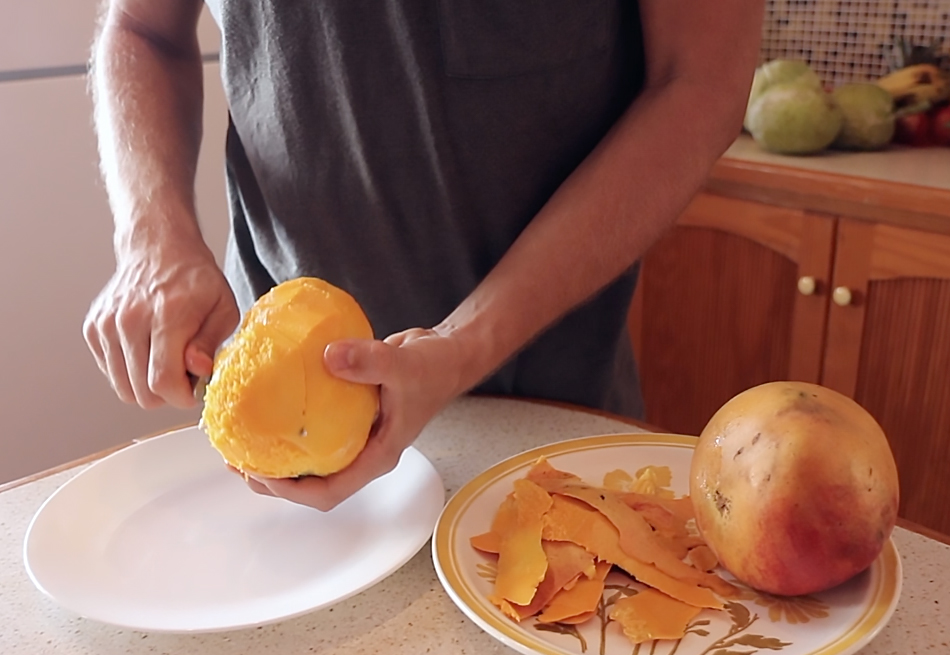
Tall parents usually have tall children. Short parents usually have short children. Blonde parents usually have blonde children. Smart parents usually have smart children… and well, you get the idea.
If you start with a fruit that is lousy, why would you expect anything good from the next generation?
Start off on the right foot. Or seed, as the case may be. If you eat an amazing mango, that’s the pit you want to keep and plant. It’s not a sure thing that you’ll get great fruit from its baby, but it’s a better bet.
Step 2: Clean Off the Pit
I slice the mango fruit and set it aside to eat later, then scrape the pit with a knife and clean it off under running water.
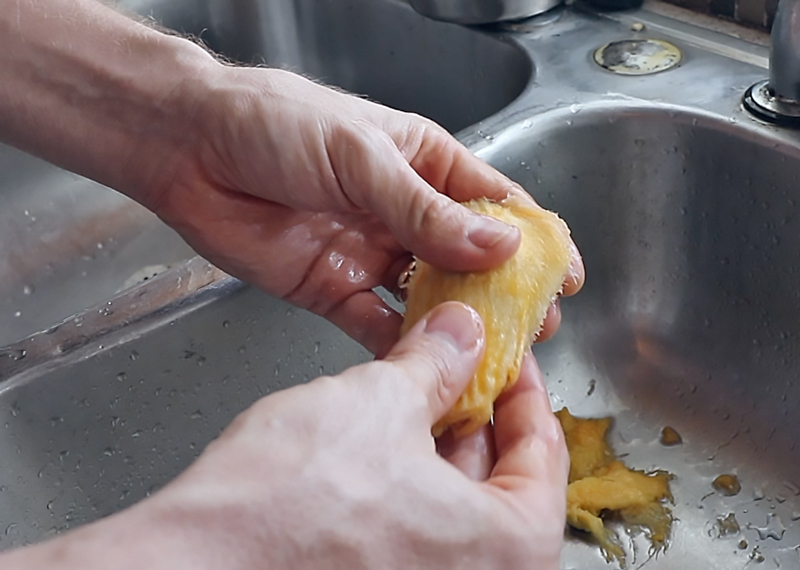
You can just plant it at this point but I think it’s better to go a step further and perform surgery.
Don’t let mango seeds sit around for long – they have limited viability and do not store well at all. If they dry out, they will die.
Step 3: Remove the Embryo from the Seed Coat
Well, here we go again with the mad science stuff.
If you cut one side of the mango pit with strong scissors, you can open it up, like so:
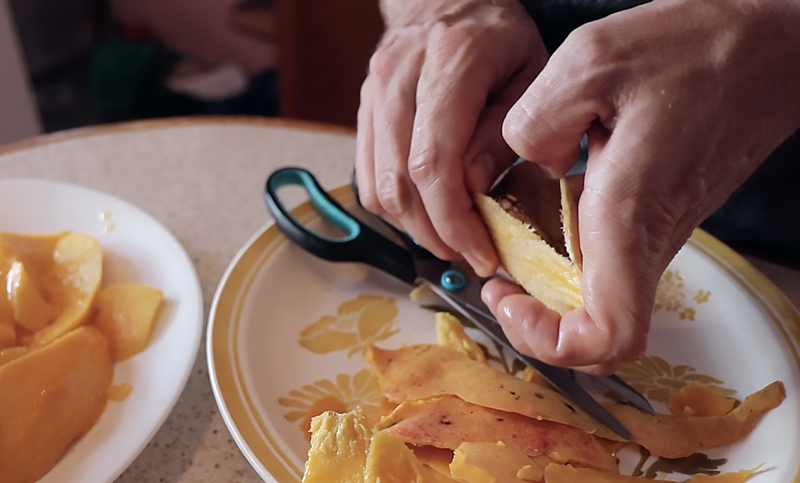
One side opens easily, the other does not. Inside the seed coat, you’ll find the embryo, which is usually about half the size of the entire pit.
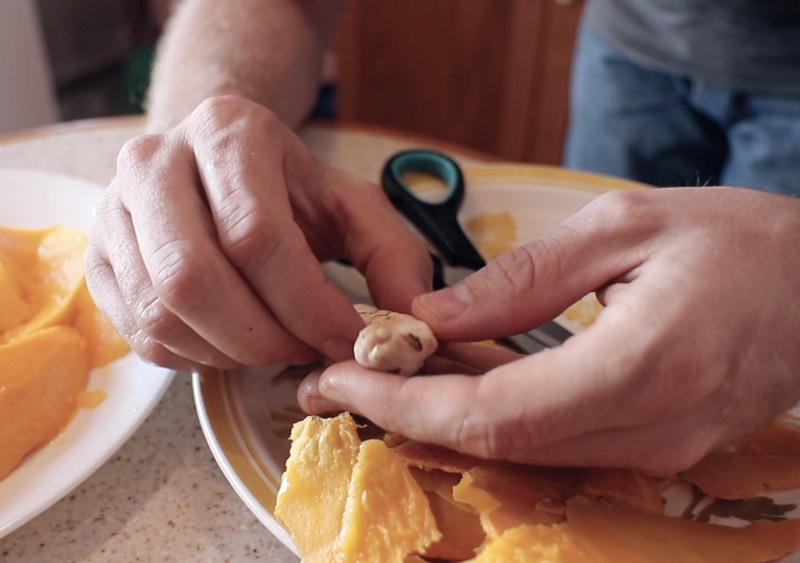
Now it’s time to plant.
Step 4: Plant That Mango Seed
Just stick that weird little naked embryo in a pot with whatever potting mix you can find, planting maybe an inch deep or so.
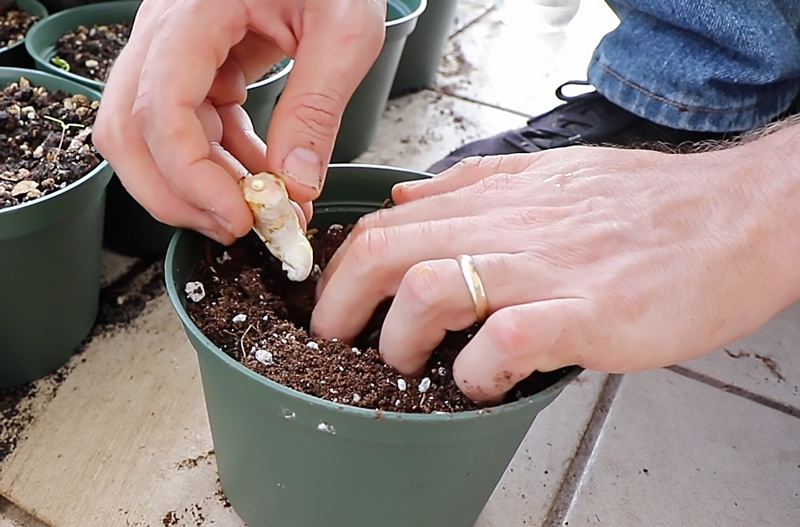
I don’t think it matters which way it goes. The little tree will find its way upwards.
Step 5: Wait a Month or So
I know, a month seems like forever, but you can do other things while you wait. You don’t have to stare at the mango pot the whole time.
It will emerge if you keep it watered now and again.
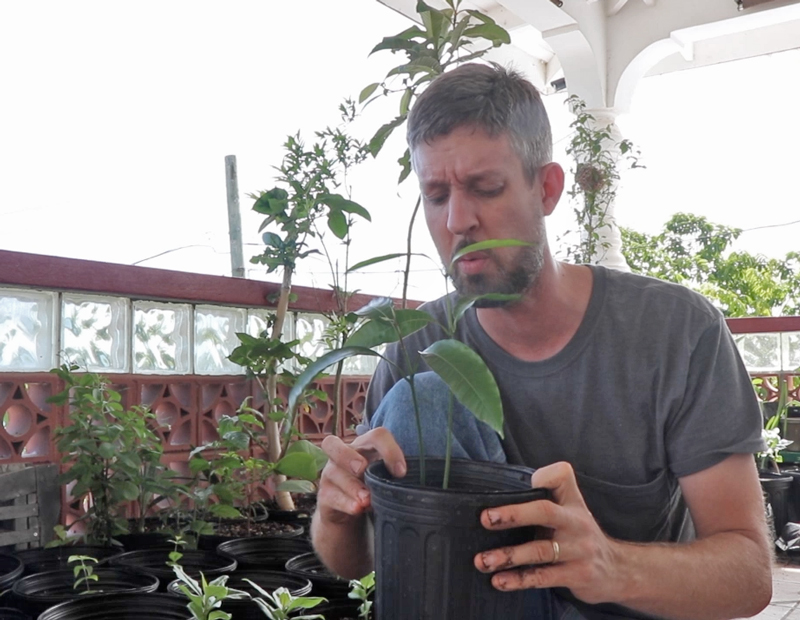
There it is, after a month of staring!
As you can see, there is more than one mango in this pot. Some mango seeds are “polyembryonic,” meaning there are multiple embryos inside a single seed. Others are “monoembryonic” and will only make a single baby tree.
You can divide up the trees and pot them separately if more than one pops up, or you can pick your favorite and remove the others.
Mango trees can fruit in 4-6 years. I got one to bloom in a pot at around 4 years of age.
I plant lots of fruit tree seeds and have had great results with peaches, citrus, loquats and pomegranates. We’ll see how the mangoes taste. When you grow your own trees from seed, you have genetically unique individuals. When you buy named, grafted varieties they are clones. A “Julie” mango on your land in South Florida will bear the exact same type of fruit as a “Julie” mango in Hawaii or India or Costa Rica.
When you plant a Julie pit, you’ll probably get a good mango tree – but the variety will not be “Julie.” It will have differences. Since many mango cultivars were chosen because they are exceptional specimens, you may not reach the same level of fruit quality as the parent, but then again, you may. Or you may find something else interesting hiding in the genetics, like a red coloration, a resistance to disease, a dwarfing pattern, or who knows what else.
So go ahead, grow a mango tree from seed. It’s way more fun than planting what everyone else is growing. I’m going to plant dozens of seedling mangoes in my yard, keep them small, then see what results.
If I’m lucky, I’ll get a “Dave’s Imperial Mango” in a half-decade.

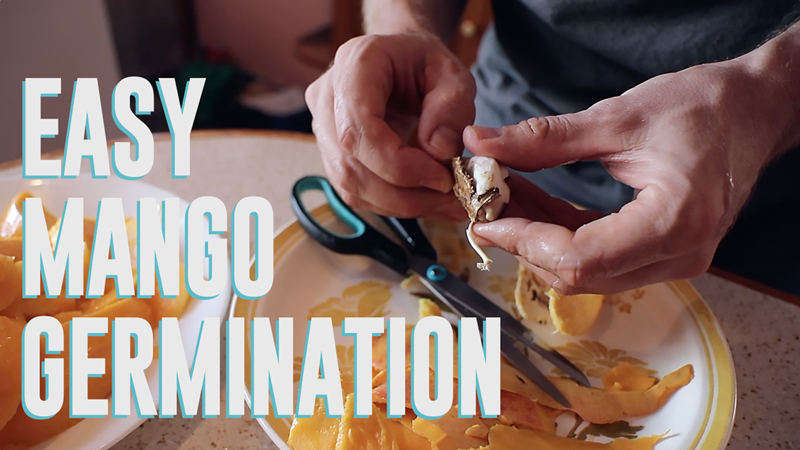
11 comments
Even if you’re unlucky, you can top work over “Dave’s subpar imperial mango wannabe” anyway. Or just plant more seeds!
Absolutely. There’s no loss.
DtG, another great video. Could you go into detail about the need to “up pot” mangoes due to their deep tap roots?
Years ago I bought a few young mango trees (two feet high) that I neglected in their smaller pots and when I went to up pot, their thick roots were wound around themselves and ended up dying.
My neighbor has a massive, overly productive mango tree with terable stringy mangos that ripen unevenly so they are not even worth juicing. (good example of bad genetics) However the mono embryonic seedlings are great for rootstock. I pot up the ones that germinate under the tree and graft on to them the following year. Your grafting video a few years ago inspired me to do it. It is so simple and when the grafts take, I feel like I did something special.
If anyone is interested in grafting mangos, check out Dr. Richard Campbell’s videos on youtube and you will see a master at work.
Eh, I just throw the pits out with the compost, and they tend to sprout. Just for kicks, we picked a sproutling we liked and have been putting a sleeping bag over it during frosts (north FL here), and so far it has survived three years. Don’t expect to ever get any fruit off it, but each year it survives, we are happily surprised.
Yeah, they will sprout in the compost. They seem to like it.
Hey, maybe that tree will eventually fruit. That would be great.
[…] reading my post on starting mango pits, Paula wrote to share her super simple […]
I don’t have a big yard so I need to keep my mango tree reasonably small. I planted one in the ground so when and do I prune it to keep it reasonably small??
Just prune when you like – mangoes aren’t really seasonal.
I also have propagated a couple of Avocado plants from seed, but I got them mixed up propagating mango plants, now I don’t know the difference as to which is a mango and which is an avocado??? Can you help me with this problem??
The leaves look quite different. Also, if there’s still some seed left on any of them, you can dig around a little and find it. Mango pits are flat, avocados close to round.
Comments are closed.